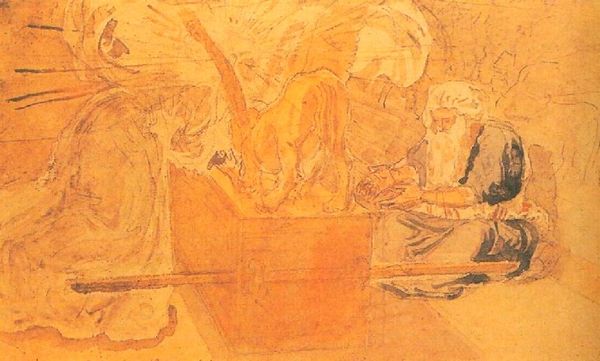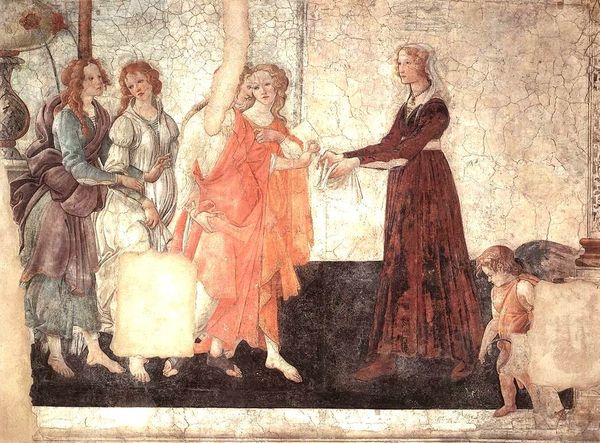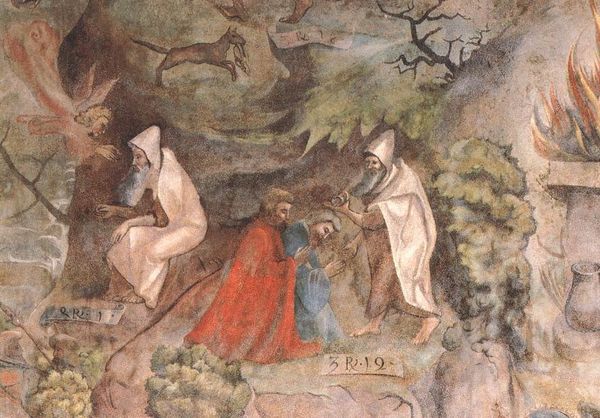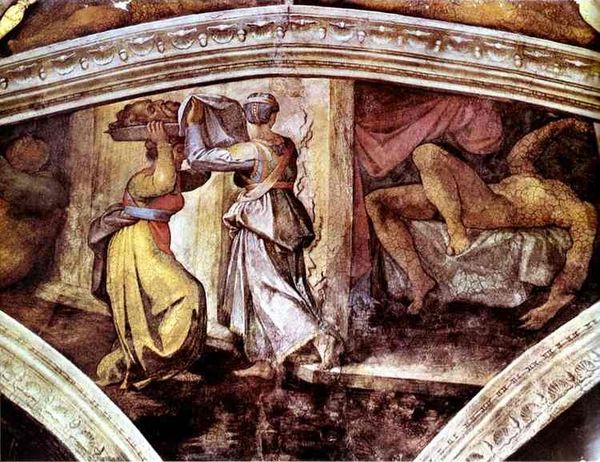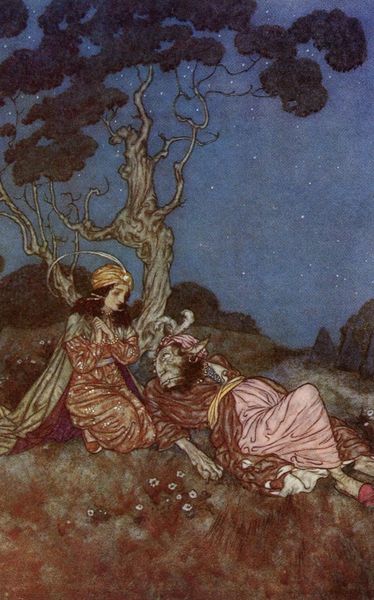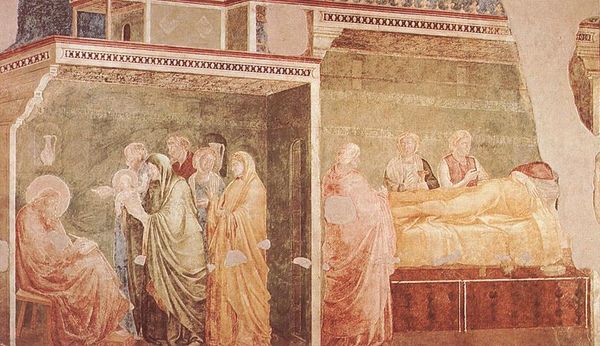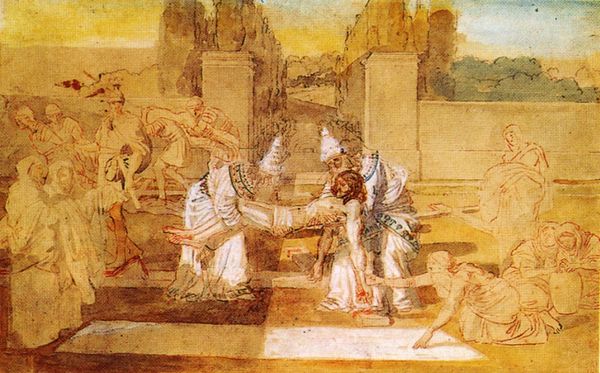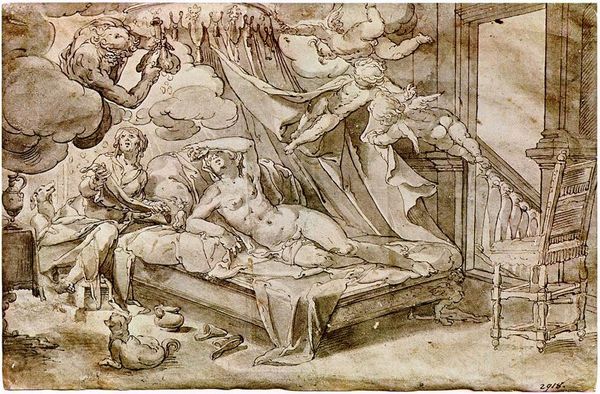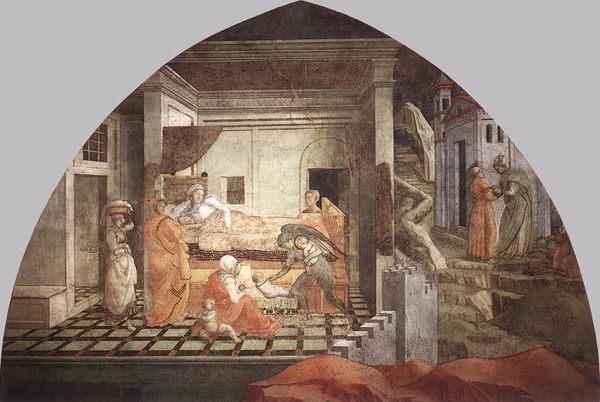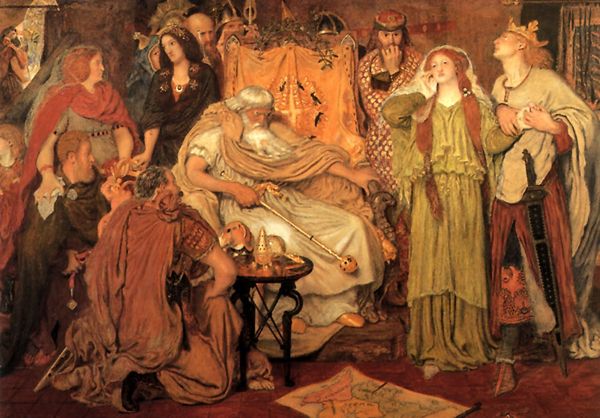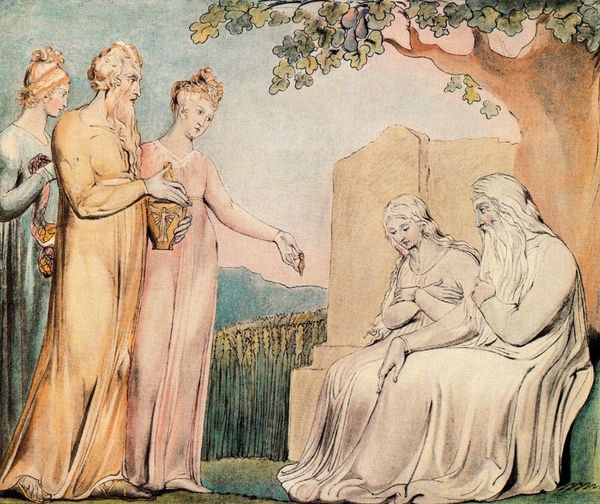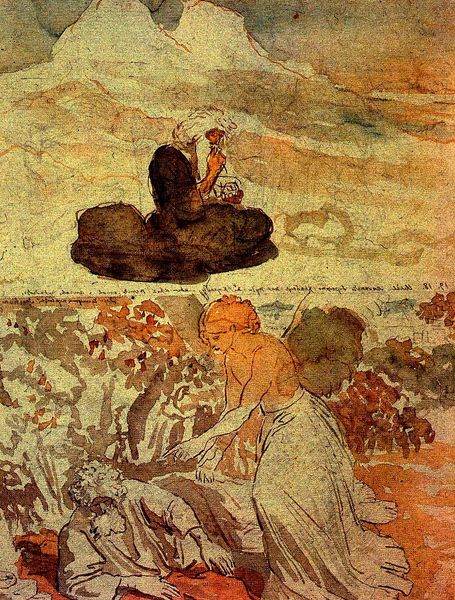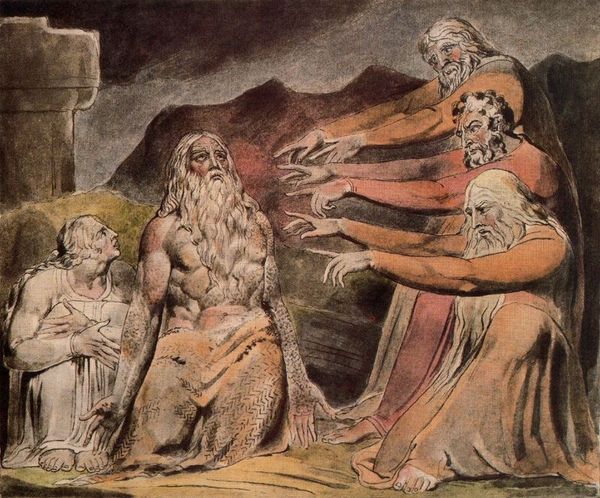
Copyright: Public domain
Curator: It has a certain delicacy, a lightness of being… the pale washes create a dreamy effect. It reminds me of a Blake watercolor. Editor: Indeed. This is a pen and watercolor drawing by Alexander Ivanov titled "Joseph’s Dream", created in 1855. Ivanov was a Russian painter who spent a significant part of his life in Italy, studying the Old Masters and biblical themes. Curator: Ivanov really exploits the luminosity of the watercolor. The radiating lines behind the figures create this ethereal space. Note how he subtly models the figures, emphasizing their gestures rather than detailed forms. Semiotically, the sparseness is powerful: it is more than rendering, but a reduction of reality to communicate an idea. Editor: This image refers to the biblical story where the angel Gabriel appears to Joseph to reassure him about Mary’s pregnancy. Consider the social environment of 19th-century Russia and the place religion played in its socio-political structures, even amongst avant-garde artists of the time. Ivanov received a large state grant for his religious paintings—this was an explicit political statement by the imperial regime, as well as an attempt to elevate culture. Curator: Observe how Ivanov guides your eye. Joseph, curled and almost fetal, lies on the bed. He’s passive, dominated by the weight of the unknown. The ethereal messengers enter, full of purpose. The figures contrast both in positioning and tonal value; consider the relationship in thirds of the composition and its intentional imbalance…it expresses so much more than just narrative! Editor: The political environment, especially considering Ivanov lived much of his artistic life in Italy but retained his Russian patronage, really demanded his religious themes be up to snuff to please all parties involved. Curator: Yes, the angel figure is fascinating; Ivanov rejects traditional iconography by imbuing the angel with human, not divine, characteristics. You see both gentleness and a certain grounded quality in the posture. I keep returning to those radiating lines, though, signifying something of immense importance being divinely brought forth. It is all very sophisticated… Editor: Studying the development and implementation of Christianity within Russia is, without doubt, critical to grasping works like this. This piece embodies this tense dichotomy, and viewing this work really highlights that. Curator: Thank you, I find it interesting seeing your historicized interpretation alongside the formal relationships at play here. Editor: Agreed! It’s really how both the image, and its importance historically, begin to reveal themselves more clearly, isn’t it?
Comments
No comments
Be the first to comment and join the conversation on the ultimate creative platform.
